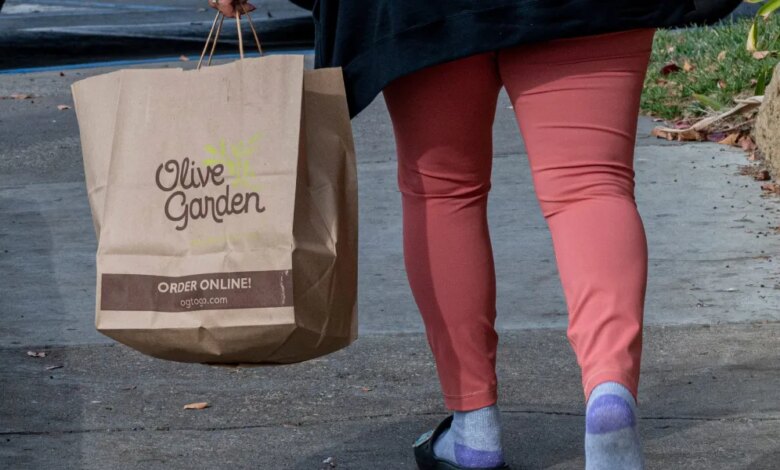Olive Garden earnings and the economy: Rich/poor divide


Chain restaurants are supposed to be the more affordable and more accessible dining establishments for everyone. Think endless soup, salad, and breadsticks at Olive Garden and the irresistible rolls from LongHorn steakhouse.
But from what the CEO of Darden Restaurants Inc. (which owns those two brands) is seeing, lower-income families aren’t dining out at their establishments as much—despite seeing total third-quarter sales rise 6.8% to $3 billion.
“We’re clearly seeing consumer behavior shifts,” Darden CEO Rick Cardenas said in a third-quarter earnings call on Thursday. “Transactions from incomes below $75,000 were much lower than last year. And at every brand, transactions fell from incomes below $50,000.”
Meanwhile, transactions for higher-income individuals were higher than last year, according to the earnings call, so households earning at least $150,000 were dining out more. That’s an “ongoing change” to Darden’s income mix, said CFO Raj Vennam. It’s also a vivid illustration of a two-track economy in which lower-income consumers are pulling back and higher-income families are splashing the cash.
Inflation meets dining
Cardenas didn’t address politics in his earnings call, but his remarks are a potentially crucial bit of evidence about the state of the almighty American consumer heading into a pivotal 2024 election that hinges on the reality—and the perceptions—of the economy.
Americans are famously miserable about the post-COVID economy, as consumer sentiment has consistently underperformed strong economic data—a phenomenon coined the “vibecession.” And economists have been puzzled as to why. It may have something to do with the housing market, with its high mortgage rates and home prices, but the Darden earnings comments suggest a two-track economy: The strong state of the upper-middle class has been disguising real struggles for lower-income households.
It’s not just Darden, either.
Although Darden owns brands considered to be in the fast-casual or “casual” fine dining and not technically fast food, it’s not surprising that lower-income households are turning to more cost-friendly options. Even massive fast-food chains like McDonald’s are upping their prices to match inflation and the increasing cost of labor—another phenomenon some call “McFlation.”
Indeed, McDonald’s CEO Chris Kempczinski said in an earnings call that the “battleground is certainly with that low-income consumer,” which they consider earning $45,000 or less per year. Kempczinski also admitted that it’s cheaper for many of these lower-income individuals to just cook at home.
“I think what you’re going to see as you head into 2024 is probably more attention to what I would describe as affordability,” Kempczinski said.
But Vennam argues that many of the Darden brands haven’t even met their price peaks yet, despite affordability challenges among lower-income families.
“If you look back over the last four years, we were underpriced a lot,” Vennam said, arguing that Darden’s price increases during that time were a “lot” lower than the industry average and the consumer price index.
“It gives us some room to continue to price if we need to,” Vennam said. “But our plan is still over the long term to price below inflation.” They’ll also do this through the steep discounts and promotions they’re famous for offering customers, like buy-one, take-one to go entrees at Olive Garden.
Return to status quo?
While lower-income households weren’t dining out as much as in the third quarter, several Darden restaurants made record sales. Eddie V’s (a seafood restaurant brand) set their all-time total weekly sales record in February, while Olive Garden met a new sales record for Valentine’s Day.
Despite the drop in lower-income households spending at Darden’s chain restaurants, the mix of income types dining out is actually somewhat of a return to status quo.
“If you think about where we were before COVID, what percent of our guests were below $50,000, what percent of our below $75,000 et cetera, across all of our segments, all of our brands, it’s almost exactly the same as it was before COVID,” Cardenas said. “So at least that makes us feel like we know how to operate in this environment.
Source link




